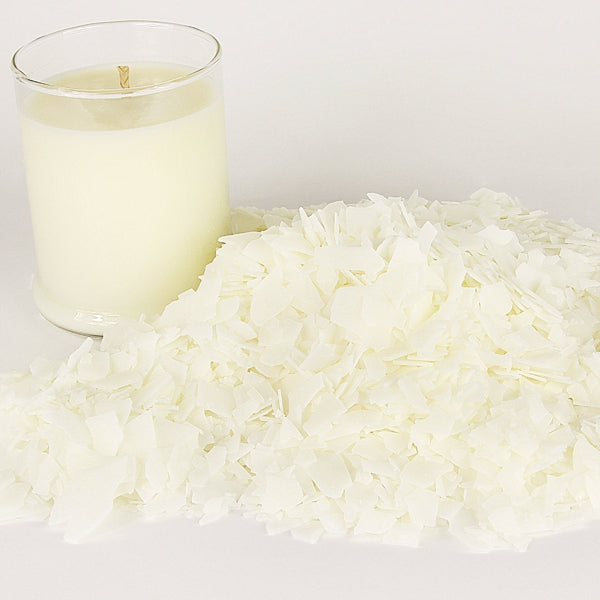Discover the Magic of Crystal Soy Candles and Home Fragrance
Discover the Magic of Crystal Soy Candles and Home Fragrance
Blog Article
From Wick to Wax: Comprehending the Chemistry Behind Soy Wax Candles and Their Environmental Influence
As we brighten our spaces with the warm glow of candle lights, there exists a world of detailed chemistry behind the seemingly straightforward act of lighting a soy wax candle. The choice in between soy and paraffin wax expands beyond mere aesthetic appeals, delving into the world of ecological effect and the very make-up of the materials. Recognizing the molecular framework of soy wax and its combustion process loses light on the discharges released right into our environments. Join us as we unwind the scientific details behind soy wax candles and explore their implications on our setting.
Soy Wax Vs. Paraffin Wax
When contrasting soy wax and paraffin wax for candle light making, it is necessary to comprehend the unique qualities and advantages of each material. Soy wax is an all-natural, renewable energy originated from soybean oil, making it eco-friendly and environmentally friendly - soy wax candles. On the other hand, paraffin wax is a byproduct of petroleum refining, which elevates issues concerning its ecological effect and sustainability
Soy wax candles shed cleaner and give off much less residue contrasted to paraffin wax candles, making them a much healthier choice for interior air top quality. Furthermore, soy wax has a lower melting factor, permitting for a longer-lasting candle that distributes fragrance better. Paraffin wax, on the various other hand, often tends to burn faster and much less cleanly, potentially launching harmful chemicals into the air.
From a sustainability viewpoint, soy wax is favored for its biodegradability and eco-friendly sourcing, aligning with the expanding consumer choice for eco aware products. While paraffin wax has been a traditional choice in candle light making due to its cost and convenience of use, the shift towards environmentally friendly alternatives like soy wax is obtaining energy in the industry.
Chemical Structure of Soy Wax

Burning Process in Soy Candles
The chemical composition of soy wax straight influences the combustion process in soy candles, influencing variables such as melt time, aroma launch, and environmental influence. When a soy candle is lit, the heat from the flame melts the wax near the wick. This fluid wax is then prepared the wick due link to capillary activity. As the liquid wax gets to the flame, it vaporizes and goes through combustion. The burning procedure entails the vaporized hydrocarbons in the wax reacting with oxygen airborne to produce heat, light, water vapor, and carbon dioxide.
The combustion effectiveness of soy candles is affected by the pureness of the soy wax and the top quality of the wick. A clean-burning soy candle light with an appropriately sized wick will certainly reduce and generate a stable fire soot development. This not only extends the burn time of the candle but also improves the launch of fragrances. Furthermore, soy wax candles have a lower ecological impact compared to paraffin candle lights due to their naturally degradable and sustainable nature.

Ecological Advantages of Soy Wax

Thought about a sustainable alternative to conventional paraffin wax, soy wax offers notable ecological advantages that make it a popular selection among eco-conscious consumers. Soy wax burns cleaner and creates less residue than paraffin wax, adding to better indoor air high quality and decreasing the need for cleaning and maintenance. Generally, the environmental benefits of soy wax line up with the expanding need for lasting and eco-friendly items in the market.
Recycling and Disposal Factors To Consider
Recycling and proper disposal of soy wax candles play an important function in maintaining environmental sustainability and reducing waste in communities and houses. The very view publisher site first step is to ensure that the candle has actually burned entirely when it comes to reusing soy wax candle lights. This can be attained by permitting the candle to melt until the wick is no longer usable, and after that allowing the remaining wax cool and strengthen. Once about his the wax has strengthened, it can be thoroughly gotten rid of from the container.

In regards to disposal, if recycling is not an alternative, soy wax candles are biodegradable and can be securely taken care of in the majority of home waste systems. It is constantly advised to check with neighborhood recycling centers or waste administration solutions for details standards on candle light disposal to ensure correct handling and environmental defense.
Conclusion
In verdict, the chemistry behind soy wax candle lights exposes their environmental advantages over paraffin wax candle lights. Soy wax, derived from soybean oil, burns cleaner and produces much less residue when compared to paraffin wax.
When contrasting soy wax and paraffin wax for candle making, it is crucial to understand the distinctive attributes and advantages of each material (candles).Soy wax candles burn cleaner and release less soot contrasted to paraffin wax candle lights, making them a much healthier selection for indoor air quality.Thought about a lasting choice to typical paraffin wax, soy wax provides notable ecological benefits that make it a prominent choice amongst eco-conscious customers. Soy wax burns cleaner and produces much less soot than paraffin wax, contributing to far better interior air high quality and lowering the requirement for cleansing and upkeep.In final thought, the chemistry behind soy wax candles exposes their environmental benefits over paraffin wax candle lights
Report this page